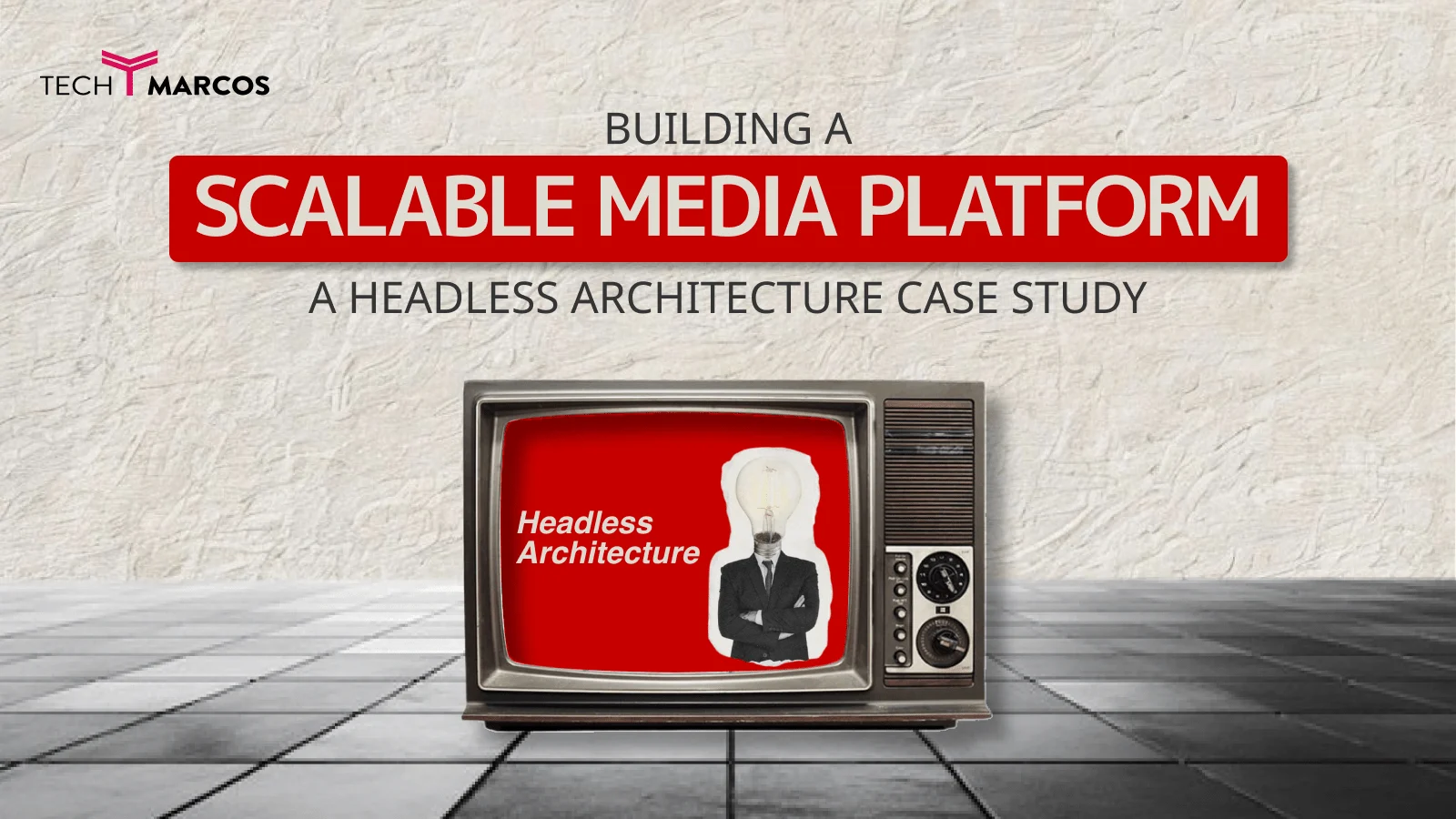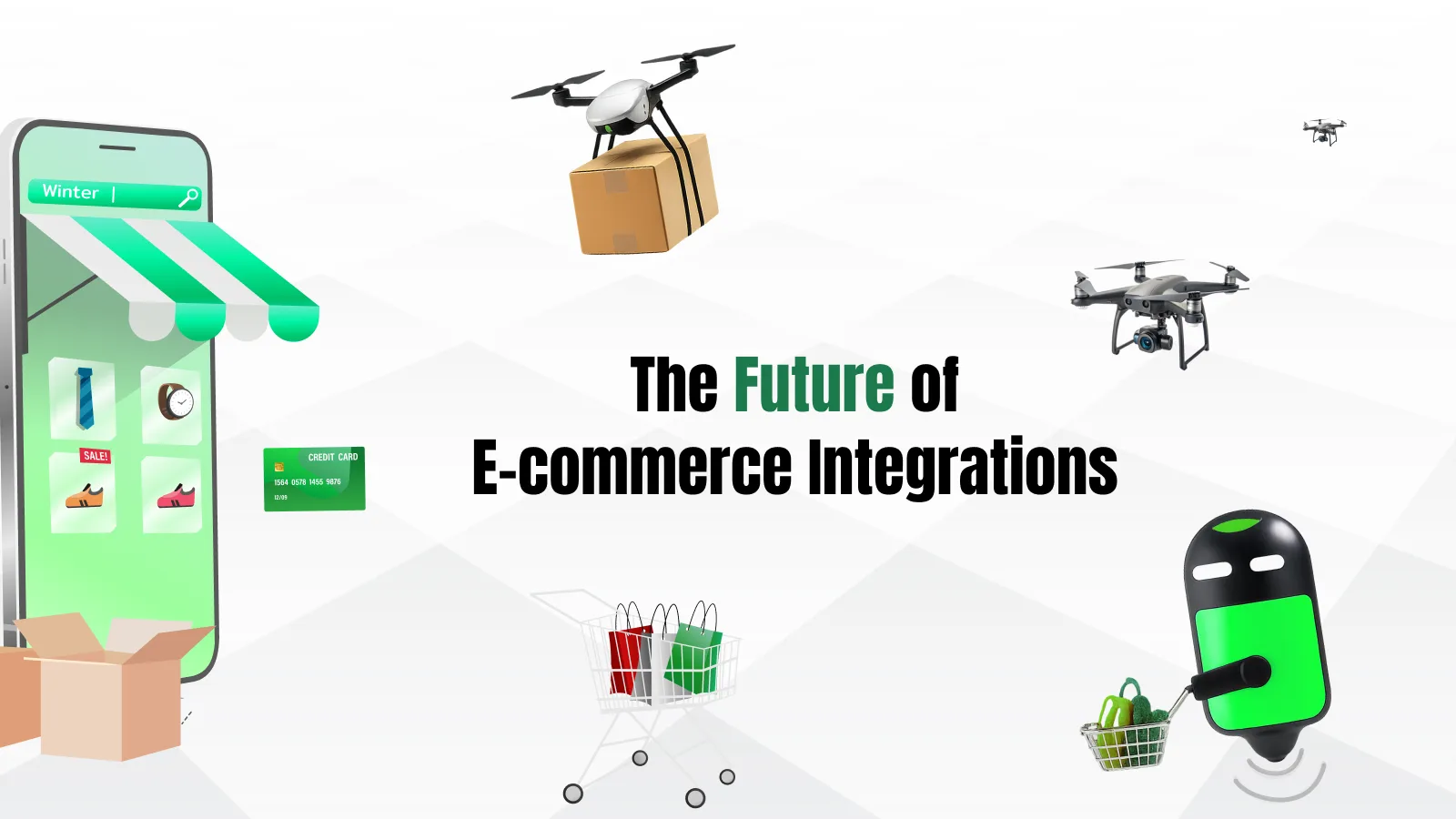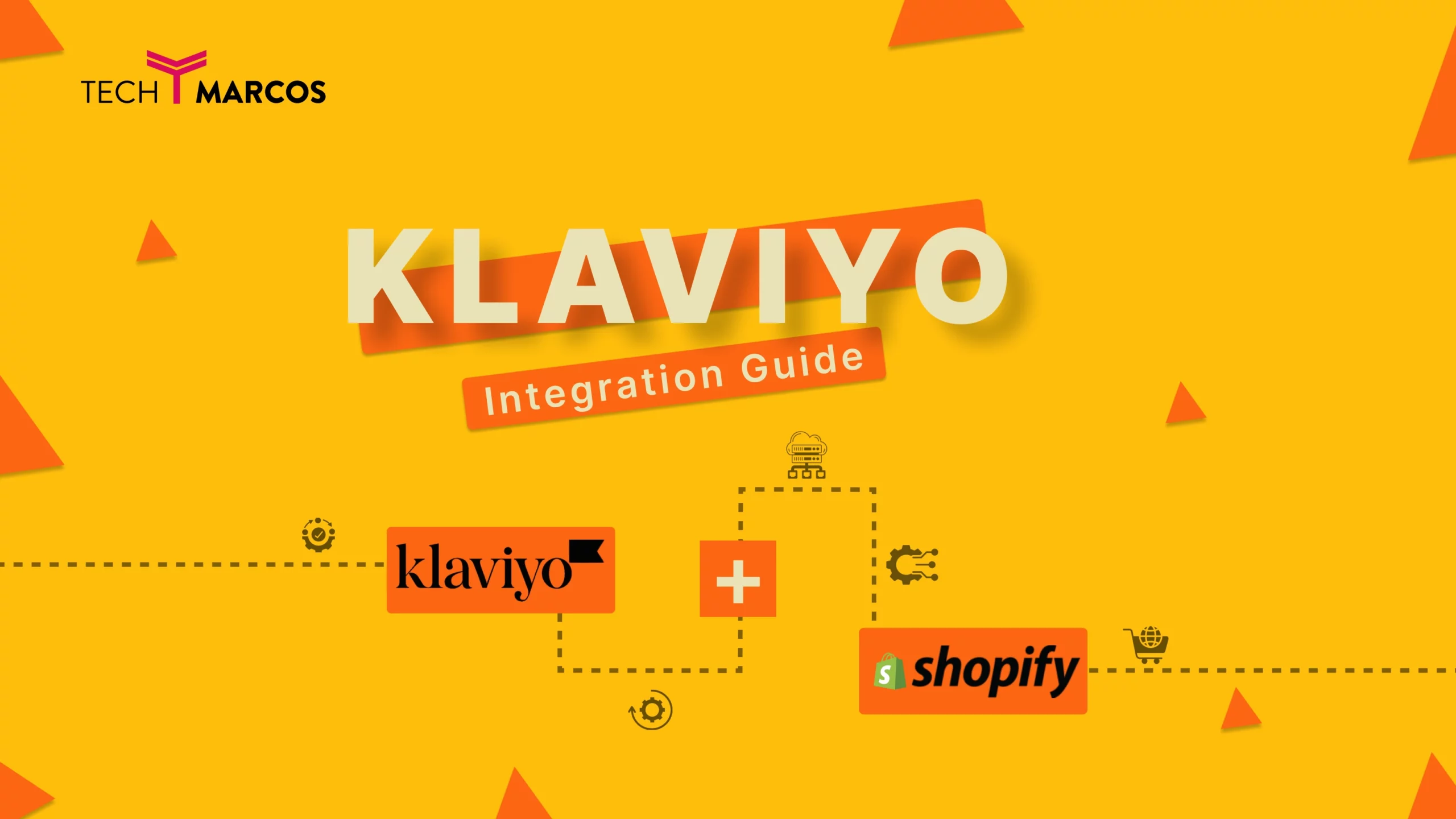Building a Scalable Media Platform A Headless Architecture Case Study
Project Goal: A Living Digital Storytelling Platform
Our client did not want a simple web-site, rather, he dreamed of a highly involved, interactive online tool that would be able to:
- Showcase the cultural identity of a city
- Support rich media storytelling
- Enable frequent content updates by non-tech editors
- Perform fast across all devices and future-proof platforms
- Increase and decrease with traffic and content load without difficulty
The customer required rapid, versatile publishing across devices, and platforms such as Wix or traditional WordPress themes were unable to meet their demands. So, we recommended a headless architecture.
Our Solution: Modular, Fast, and Editor-Friendly
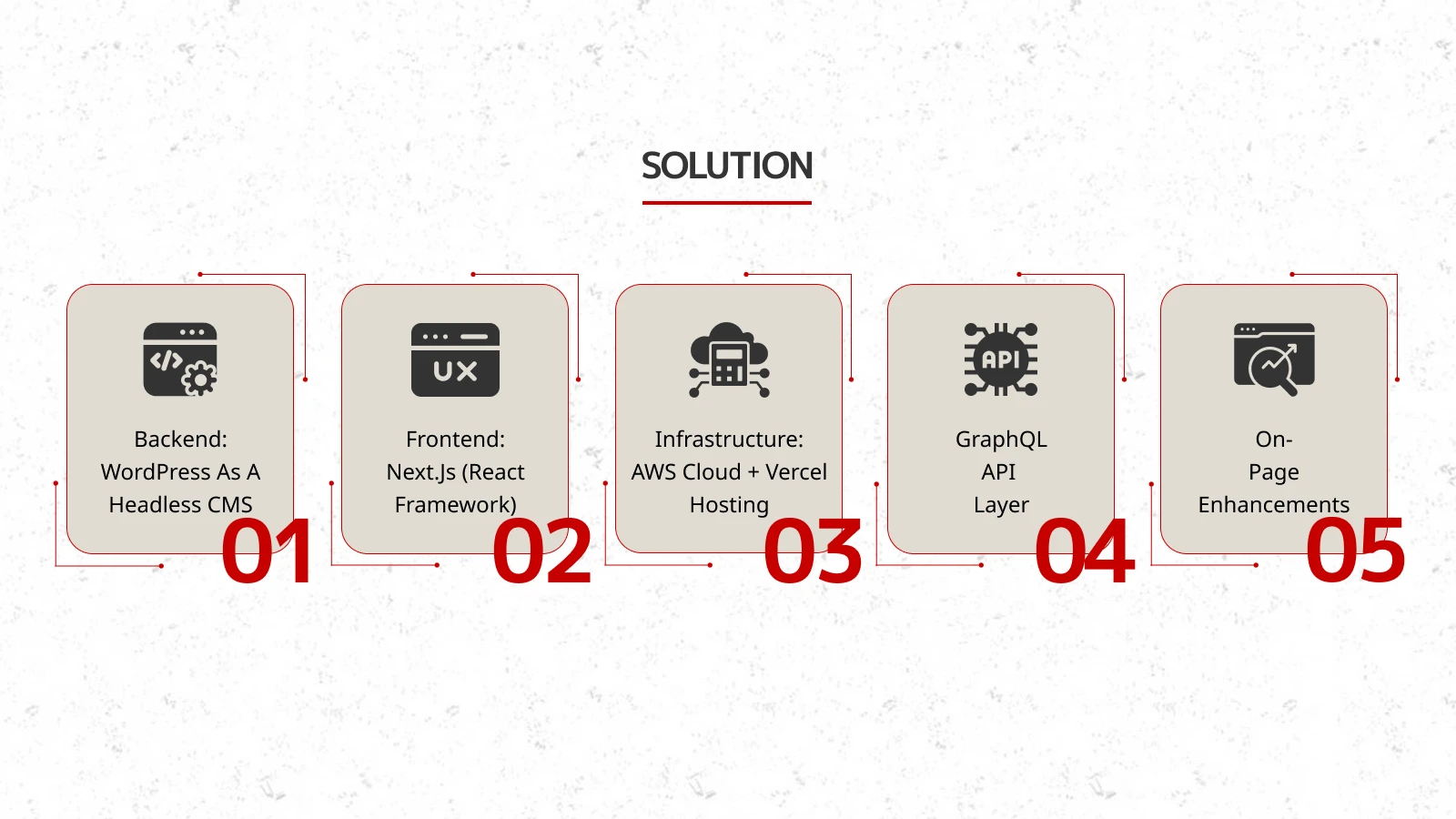
We came up with full headless architecture with decoupled stack:
1. Backend: WordPress as a Headless CMS
- Familiar editor UI for the content team
- Structured content types (blog, media, events, profiles)
- Custom fields for SEO, media embedding, tagging
- REST + GraphQL APIs enabled content delivery to multiple platforms
Why headless WordPress? This CMS provided the best of both worlds and could easily be used yet it could also manage decoupled delivery through APIs.
2. Frontend: Next.js (React Framework)
- Server-side rendering (SSR) for SEO
- Blazing-fast load times via static generation and CDN caching
- Rich media support (galleries, videos, parallax sections)
- Dynamic routing and localization
Why Next.js? Its hybrid rendering capabilities allowed seamless integration with the Headless CMS API, making it ideal for high-content environments and fast user interfaces.
3. Infrastructure: AWS Cloud + Vercel Hosting
- WordPress backend on AWS EC2 + S3 for asset storage
- Frontend hosted on Vercel with global CDN
- Auto-scaling and high availability
- Caching, minification, and media optimization
Why Vercel + AWS? This combination gave flexibility, performance and scalability at minimal overhead.
4. GraphQL API Layer
- Used to streamline content delivery to the frontend
- Faster, precise data fetching with reduced payload size
- Supported preview and live content versions
- Enabled frontend and backend teams to work independently
Why GraphQL? It minimized unnecessary data transfer, enabling faster, leaner performance
5. On-Page Enhancements
| Feature | Description |
|---|---|
| Structured SEO Schema | Auto-generated schema for each content type |
| AEO-Optimized Content | Modular content made it easier for search engines and AI assistants |
| Smooth UX | Subtle animations, fast transitions, clean UI interactions |
| Localization Ready | Multi-language support built into the structure |
Results: A Digital Canvas Built to Scale
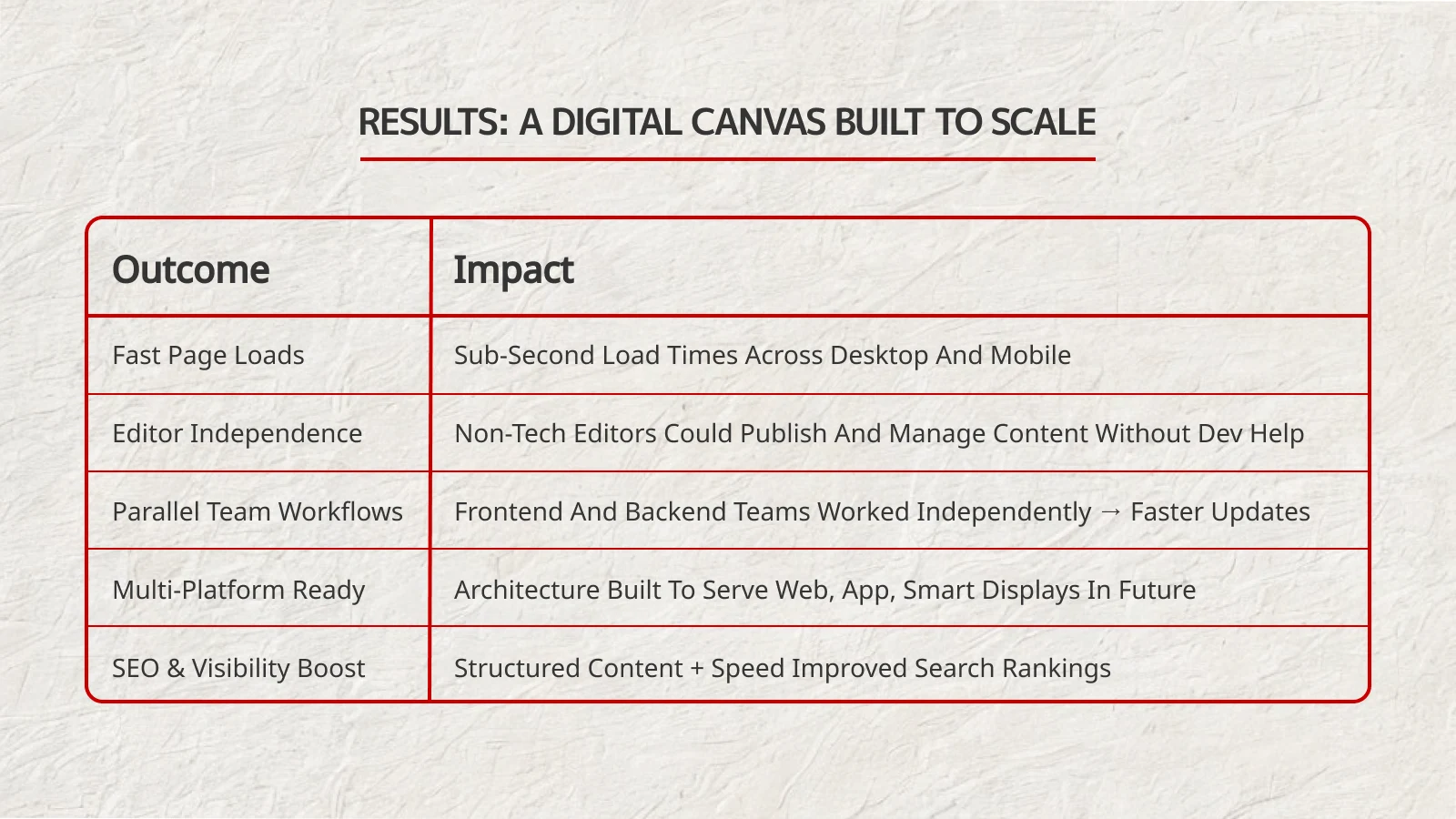
Client Feedback
“We finally have a digital space that grows with us — and tells our story the way it deserves to be told.” — Project Stakeholder
Key Takeaways
- Headless does not mean headless of developers only, content teams also get to be powerful
- Combining familiar tools (WordPress) with new frameworks (Next.js) might unleash strong outcomes
- Architecture is now apps, smart display, and future proof
Limitations and Considerations of Headless Architecture
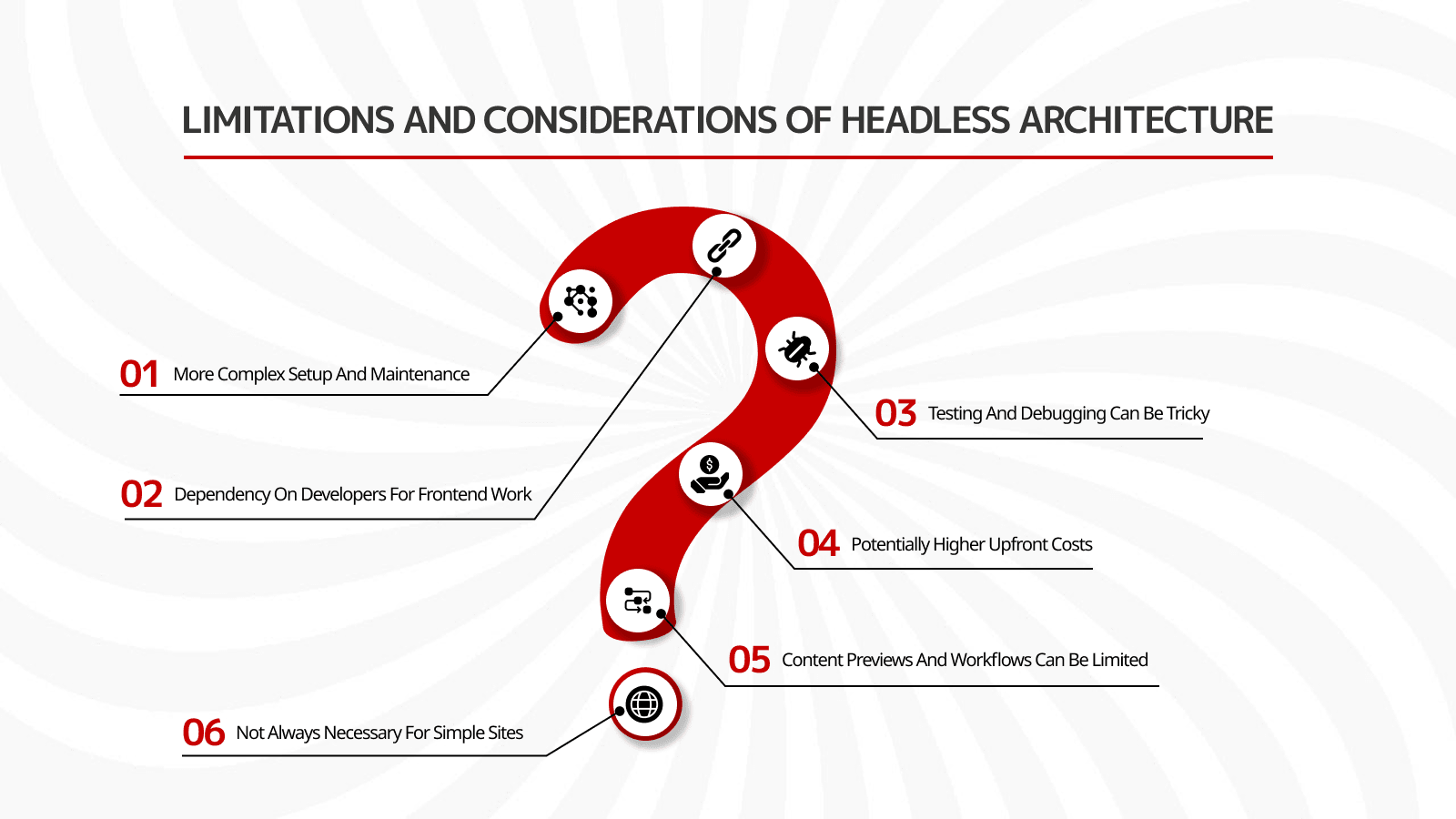
1. More Setup and Maintenance
What this means: Compared to the traditional CMSs that follow plug-and-play strategies, headless forces a developer to establish numerous layers: backend, API, frontend, deployment, and security, and frequently at the ground level.
Why it matters:
- You need technical expertise (especially in API and frontend frameworks)
- Increases initial development time
- Requires long-term investment in DevOps and infrastructure
Good to know: Managed platforms like Vercel (for frontend) and hosted CMSs (like Contentful or Storyblok) help reduce this burden.
2. Dependency on Developers for Frontend Work
What this means: The out of box experience of non-technical users is not a visual page builder or editor, which allows users to build pages visually.
Why it matters:
- Marketers/designers may need to rely on developers to build new pages or layouts
- Requires investment in design systems or internal tools for layout management
Workaround: Use visual editing layers like Builder.io or headless WordPress page builders, or integrate custom preview environments.
3. Testing and Debugging Can Be Tricky
What this means: Decoupling brings the risk of more pieces in constant motion that need to be in agreement: APIs, frontend build, and backend services.
Why it matters:
- More chances for bugs between systems
- Harder to debug issues across layers (e.g., is it API or frontend?)
- Requires better logging and monitoring practices
Trace down the stack with such tools as Sentry, Postman, and GraphQL playgrounds.
4. Potentially Higher Upfront Costs
What this means: Because you're building a custom stack, you’ll likely pay more in the early stages for:
- Development hours
- Hosting and infrastructure
- Developer tools and APIs
Why it matters:
- Small businesses with simple needs may not benefit immediately
- Cost-effectiveness improves at scale or with multi-channel needs
ROI increases over time if you plan to grow across platforms or markets.
5. Content Previews and Workflows Can Be Limited (By Default)
What this means: With headless, there is no built-in preview mode or staging mode as you might be used to with conventional Content Management Systems.
Why it matters:
- Editors can't see live previews unless you build them
- Publishing workflows (approval, drafts, scheduling) may require custom logic or plugins
Solution: Most modern headless CMSs now offer preview APIs, roles & workflows — you just need to configure them correctly.
6.Not Always Necessary for Simple Sites
What this means: For basic brochure websites or blogs with no multichannel needs, headless may be overkill.
Why it matters:
- More complexity than needed
- Traditional CMS (like WordPress) may be more cost-effective and faster to launch
If you're building a small site with minimal content change, you may not need headless at all.
Conclusion
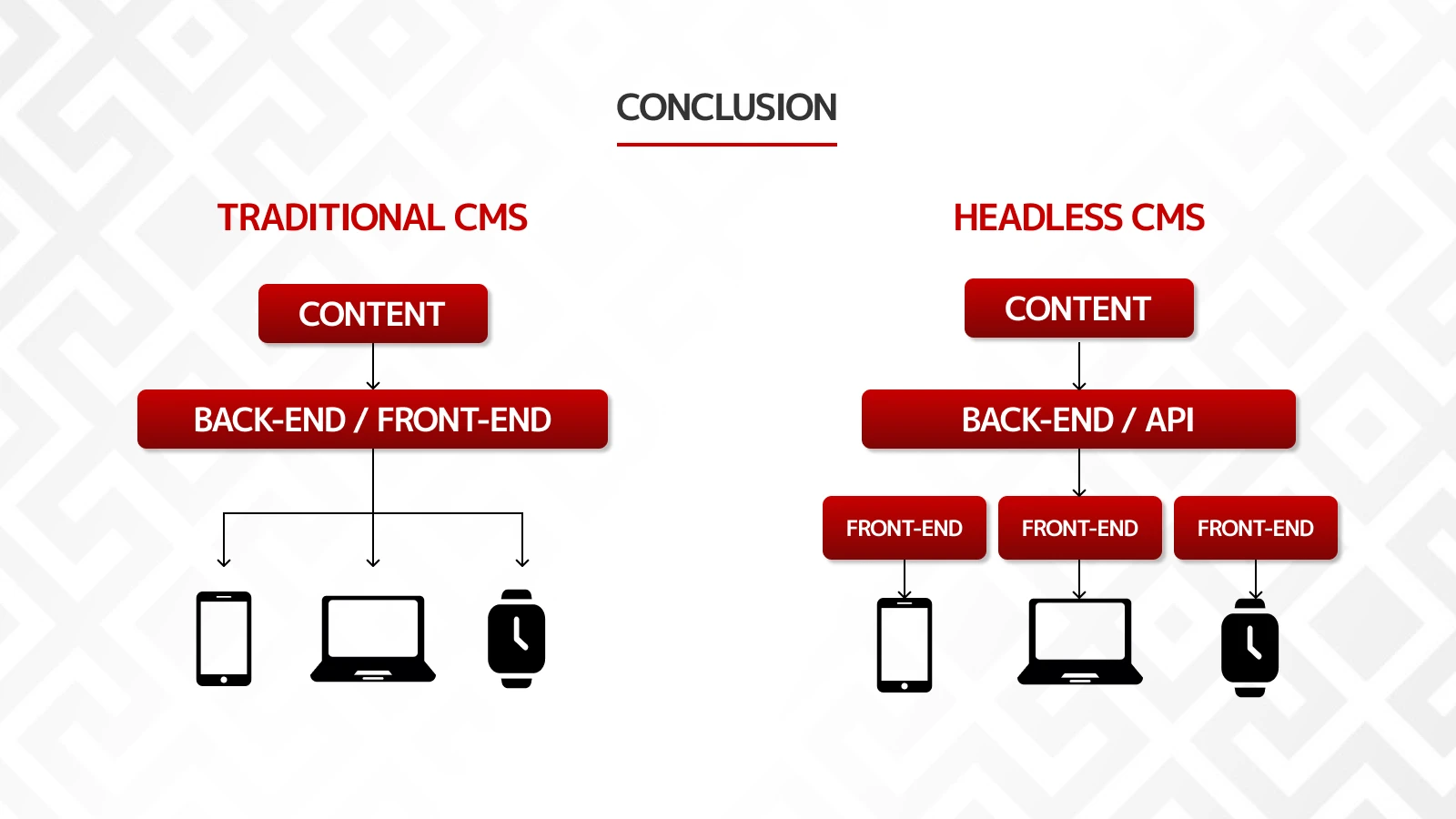
Final Thoughts: Is Headless Architecture Right for You?
Headless architecture is not only a trend — it’s a modern solution to the actual digital challenges such as:
- Managing content across platforms
- Improving speed and SEO
- Scaling without limits
- Giving both developers and marketers more flexibility
Building your digital presence as an eCommerce store, a media platform, or a cross-channel brand experience? Headless can make your future-proof digital presence.
But it’s important to consider:
- Do you have the technical resources?
- Are your content needs complex or multi-channel?
- Do you plan to scale or experiment across platforms?’
If yes, headless might just be the smartest move you make this year.
Pro tip: Start small. You don’t need to go “fully headless” on day one. Begin with a hybrid setup and grow from there.
FAQ
What is headless architecture in simple terms?
Headless architecture decouples content, data and business logic (the backend), and the interface, which users see (the frontend); each can then communicate with the other through APIs. This allows you to develop various interfaces such as websites, applications as well as kiosks using the same backend.
What’s the difference between headless CMS and traditional CMS?
A traditional CMS (such as WordPress) integrates both the display and management of content. A headless CMS decouples them out - it does not determine how it is displayed, only how it is controlled and offered up through APIs so you can use it however you choose, with any front end technology.
Is headless CMS good for SEO?
Yes. Headless allows:
- Faster page loads
- Server-side rendering (SSR)
- Structured content for rich results and Answer Engine Optimization (AEO)
- Better control over meta tags, schema, and URLs
When should a business consider switching to headless?
You should consider headless if:
- You publish content across multiple platforms
- You want full control over UX and performance
- Your dev and content teams need to work in parallel
- You plan to scale quickly or experiment with new channels
Which frameworks and tools work with headless CMS?
Headless is front-end-agnostic. You can use:
- React, Next.js, Vue, Nuxt.js (for web)
- Flutter, React Native (for mobile)
- Shopify Storefront API, Medusa, Commercetools (for commerce)
- Vercel, Netlify, AWS (for hosting/CDN)
- Contentful, Strapi, Sanity, Headless WordPress (as CMS)
Is it expensive to build headless architecture?
Yes, at first maybe it may cost more than a drag-&-drop CMS installation. But down the line it saves up on:
- Faster time to market
- Lower content maintenance costs
- Better performance and SEO
- Greater ability to scale without rebuilding
Want to Explore Headless for Your Business?
At TechMarcos as a custom software development agency, we help growing brands, SaaS teams, and digital businesses unlock the power of headless architecture — without the complexity.
Let’s discuss your use case and map out a flexible, scalable, and SEO-ready solution that actually fits your goals.
